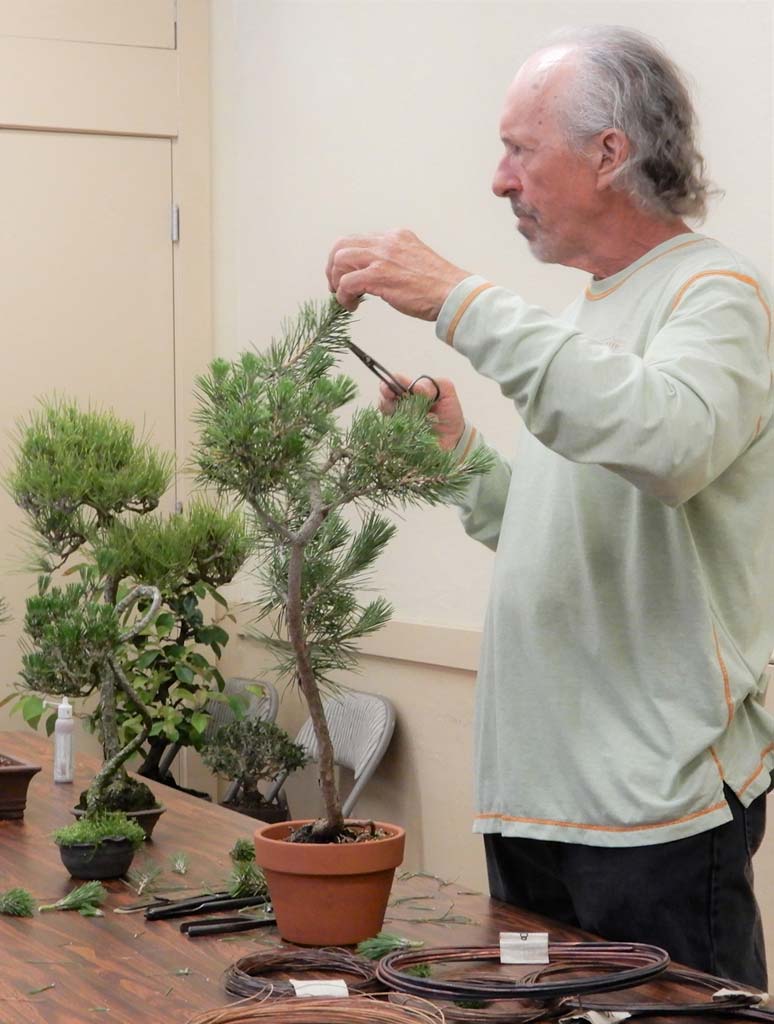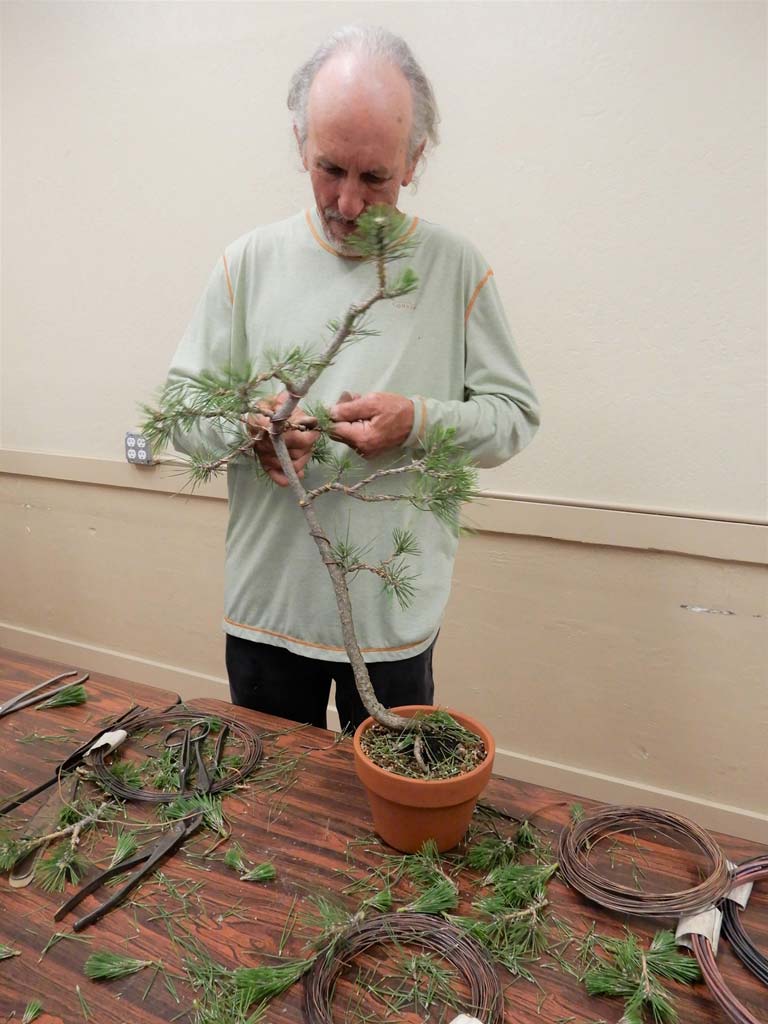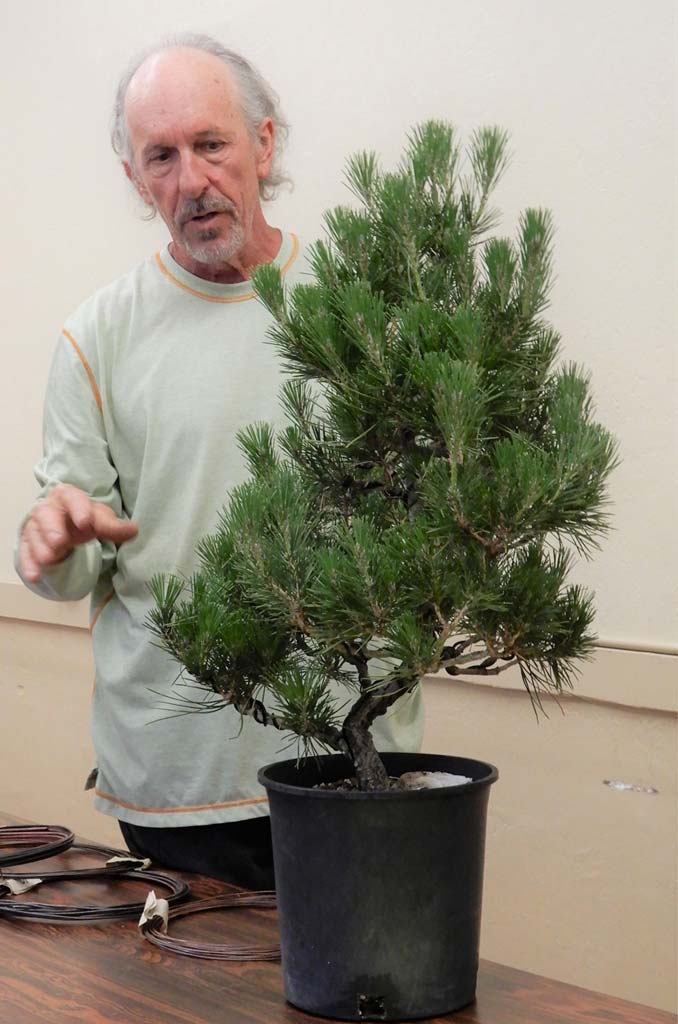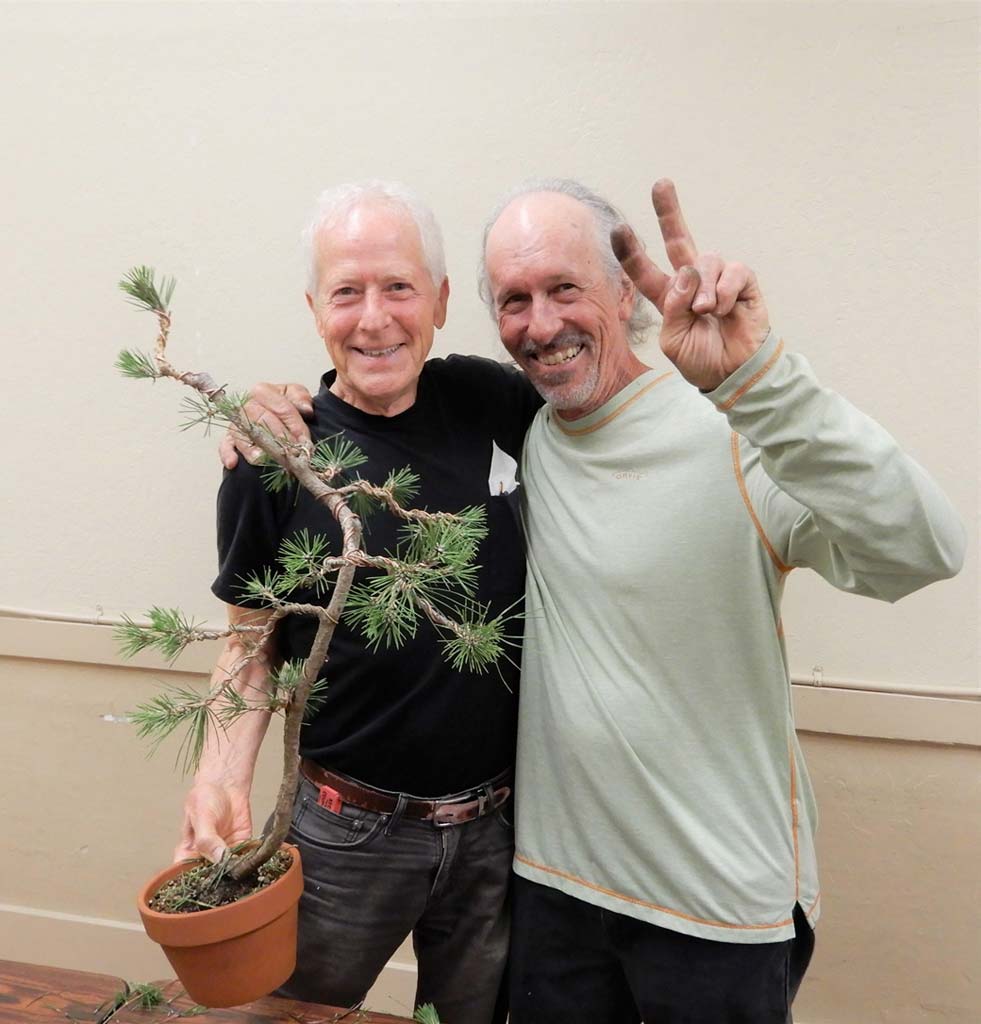Our June presenter was Bill Castellon, a professional landscaper, aesthetic pruner, and shohin fanatic with extensive experience growing and pruning pines of all sizes and varieties. The topic of the evening was decandling black pines and Bill brought a vigorous young black pine for demonstration, which was raffled off at the end of the night.

Bill went straight to a discussion of decandling timing strategies and never gave the down-and-dirty on what decandling is and why it’s important. A quick explanation for those newer bonsai enthusiasts reading this: Decandling a pine means cutting the new growth shoots of a vigorous pine, referred to as its candles, so that when the needles developing inside of them open up later, they are noticeably shorter. It is done because simply cutting the needles after they are fully developed will result in unsightly brown tips on the needles. The proper timing of this procedure is a topic of much debate, with as many opinions as there are microclimates in the San Francisco Bay Area, but the one agreed-upon constant is that the later you make the cut, so long as you don’t wait too long and miss the developmental window, the shorter the needles you will get. Decandling is also done to encourage division, being the pine equivalent of tip-pinching on deciduous trees.

Like many of our other favorite presenters, Bill does not like to state absolutes like, “You must decandle in June.” Rather, he likes to set general guidelines and emphasizes that you must consider the individual tree and its specific environment. As an illustrative example, he points out that shohin artists in Japan wait until as late as July 15th to decandle, to get exceptionally small needles. They can do that there because their climate supports it, but here in the Bay Area, Bill suggests we don’t push our pine candling past July 4th at the absolute latest. If you decandle your pines too late, you’ll get malformed or otherwise unhealthy needles, or even an entirely failed growth tip that eventually withers and dies. When in doubt, or if you absolutely must go by a specific date, Bill says that June 15th is a safe time to decandle pines in our area.

As he began to work on the demo tree, Bill gave a number of decandling pointers and answered questions, often using the demo tree to illustrate a point. He used one growth tip to show how, after decandling, you must thin the resulting buds to one new leader and a side branch–just two buds. Leave too many and you’ll get excessive swelling. A later example branch brought up a further clarification: be sure to remove the strongest growth, because strong, bulky growth should be removed and more refined growth left to develop. He also mentioned that in the first Fall after decandling, you must go back and thin the needles up to the base of the bud area, unless the tree is still in early development, in which case all those extra, unsightly needles along the stalk are actually helpful. On a mature tree, they serve no purpose and might induce unwanted budding and consequent swelling.
In response to a question regarding removing only part of each candle when decandling, which is suggested by some artists to be more appropriate in some situations, Bill declared that removing the entire candle is the tendency now, regardless of the situation. He also stated that he does not personally alter the timing of his decandling to balance the different areas of his trees (he simply has too many trees to do that), but quickly described the process, which tends to be a bit counter-intuitive. The weakest third of a tree should be decandled first, to give that area a head start in recovering and developing its candles into needles. 7 to 10 days later, the next strongest third should be decandled, with a similar delay for the strongest third of the tree. If your tree is already well balanced, then you can decandle everything all at once.
An important reminder: Japanese Black and Red pines are the only ones Bill was talking about. Others would respond too differently. Entire branches would die on a Ponderosa pine if it were to be decandled! How to tell Black and Red pines: every needle is actually two needles.

The question of fertilizer and its timing came up. According to Bill, for pines an acidic fertilizer with a good amount of nitrogen will work best. It’s important to feed them well as soon as they start taking off in February to early March. Then stop feeding after decandling so the new growth doesn’t explode out of control.

Before wrapping up and raffling the demo tree (won by Chris Ross, who promises to bring the tree back for periodic summaries on its progress), Bill worked on Peter Makepeace’s tree for a bit, making some occasionally dramatic decisions for him. Peter was startled at first, but ultimately glad to see the obvious good direction in which Bill had sent his tree.
– David Eichhorn
Photos by George Haas and Sharon Bone


